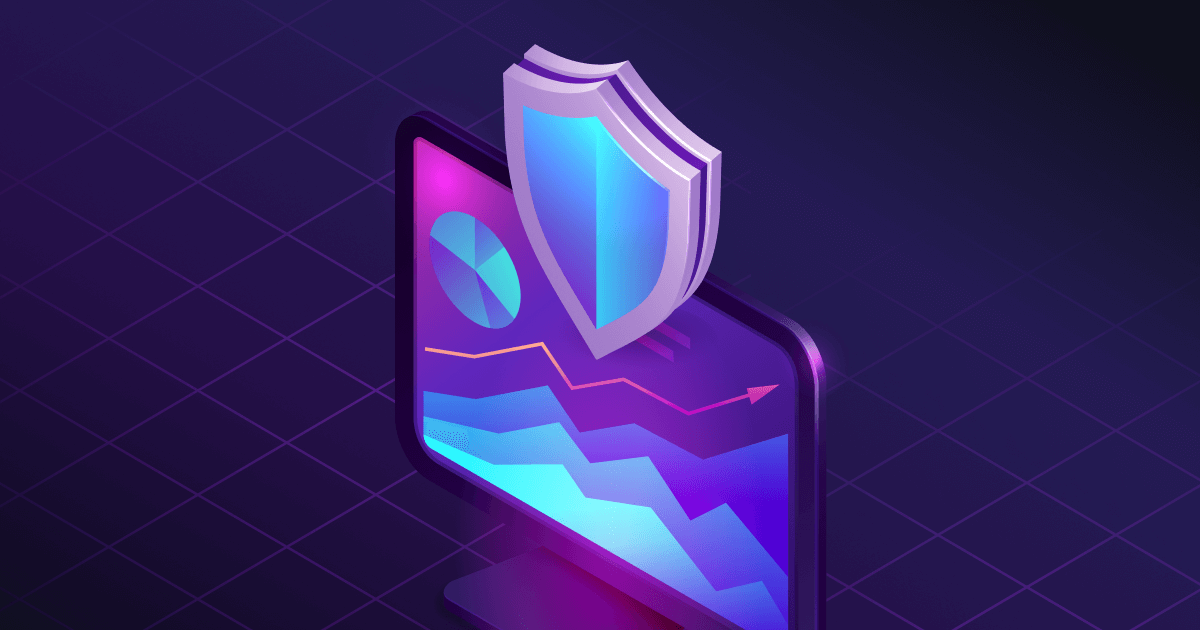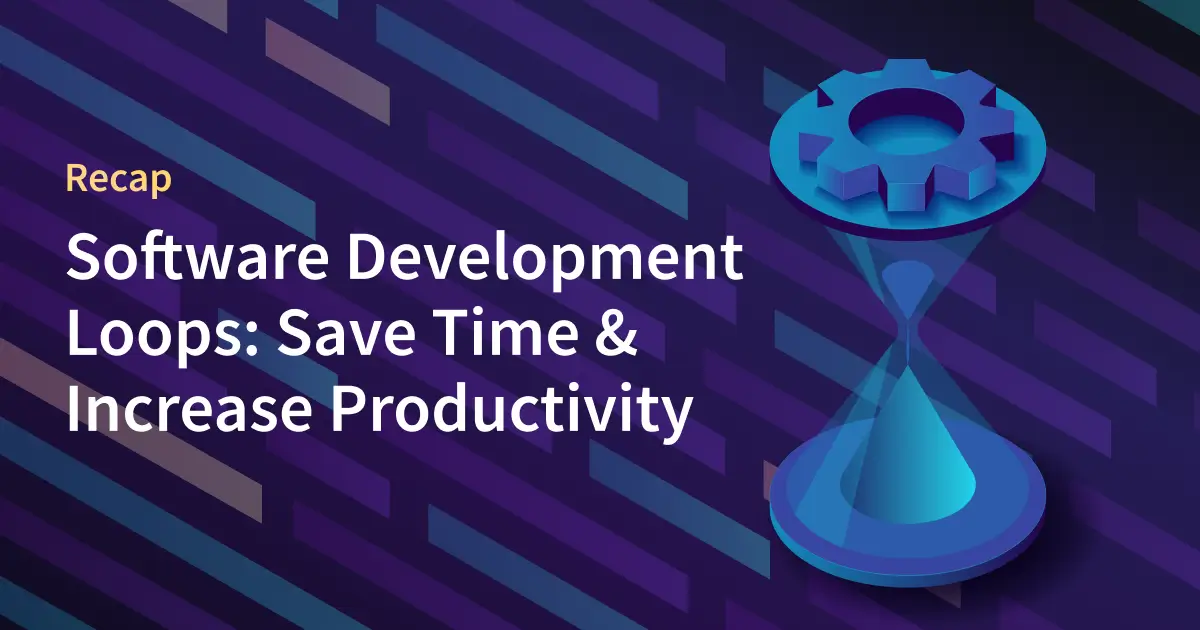In the present, ever-changing IT landscape, business leaders have realized the need to transform the way they build and ship software. These realizations are driving increased adoption of DevOps. Indeed, most companies are leveraging DevOps services to ship their products to market faster and better meet customer expectations. However, amid this rapid transformation, one aspect of the high-speed software development lifecycle (SDLC) is left behind. That’s Security!
Many companies have realized that traditional approaches for integrating security into the SDLC are not keeping pace with high-velocity, continuous software development. Indeed, traditional security techniques and manual controls are often perceived as an impediment to DevOps speed. However, organizations that enjoy DevOps speed at the cost of security risk leaving much of their value on the table. And, now is the high time to strike the balance between speed and security. This is where DevOps Security (or DevSecOps) comes in.
Let’s understand what DevOps Security is, the challenges it brings to the table, and how to overcome them:
What is DevOps Security?
Traditionally, security-related activities are performed at the end of the SDLC. Consequently, the security teams wouldn’t have identified security issues and other vulnerabilities until they were far more expensive and time-consuming to rectify. In the worst cases, they wouldn’t have identified any security loopholes at all, due to time constraints.
According to a recent report by IBM, fixing a bug identified during implementation costs 6x times as much as fixing a bug identified during the design phase. Moreover, the cost of fixing bugs found during the testing phase could be 15x times higher than the cost of fixing those found during the design phase.
This is what DevOps Security aims to change.
DevOps security refers to the practice of integrating security testing across the software development lifecycle, not just at the end. Security processes and controls are built into every phase of the DevOps lifecycle, from initial design through integration, testing, deployment, and software delivery. This helps fix security issues as they emerge, when they are easier and less costly to address, before they are pushed into production.
Why Do You Need DevSecOps in Your Organization?
DevSecOps (development, security, and operations) automatically integrates security into every step of SDLC with a shift-left approach. This means that security responsibilities are shifted left, empowering developers to remediate security issues in the code before it is pushed into higher SLA environments. In fact, everyone working across the SDLC, including infrastructure engineers and operations teams, are all empowered to take ownership of security issues and are made accountable, rather than the sole responsibility of security teams. This helps DevOps teams to prevent security issues from entering the production phase and significantly reduces the need for late-stage, manual security reviews, which can slow down software releases. Simply put, DevSecOps enables the business to realize both speed and security. Now, your development teams can deliver better, more secure code faster.
Here are some of the benefits that make DevSecOps a necessity for your organization:
- Your code is more secure, as security is a continuous process
- Early detection and remediation of defects minimize your costs
- Better collaboration between development, security, and operations teams, thereby improving overall productivity
- Reduced overall business risks for your organization
- Improved security and compliance posture of your organization
Want to dig deep into why DevSecOps is important for your organization? Read our exclusive blog on DevSecOps and its importance.
What Can Be Done to Ensure the CI/CD Pipeline Is Secure?
Continuous Integration and Continuous Delivery (CI/CD) pipeline is the foundation for the DevOps software development lifecycle. So, any security issue or vulnerability in your CI/CD pipeline can significantly deteriorate the security posture of your application and invite cyber risks. That’s why it’s crucial to ensure that your CI/CD pipeline is secure. Leverage DevSecOps to implement security practices across your CI/CD pipeline and ensure security. Here are some of the best practices you need to follow to improve CI/CD pipeline security:
- Identity and address security bugs early in the development cycle. This can be done by performing security-related testing and procedures within the development pipeline.
- Define security-related objectives before coding starts.
- Incorporate threat modeling when conceptualizing the system.
- Implement linters and static analysis to eliminate manageable issues early on
- Leverage software composition analysis to ensure that the open-source dependencies are free from vulnerabilities
- Conduct Static Application Security Testing (SAST) to unearth security gaps in the code when it is pushed into the pipeline and perform another layer of SCA. Integrate SAST tools into the automation pipeline.
- Conduct security integration tests once the builds are completed.
- Conduct security tests to continue running post-production. Automate patching and configuration management so that the software has access to the latest and most secure versions of all its dependencies.
DevSecOps aims to implement security controls and measures at every stage. Leveraging automation techniques allows rapid product delivery without compromising data defense and safety measures.
For more details on improving your CI/CD pipeline security, read our exclusive blog on Six Best Practices for Securing Your CI/CD Pipelines!
7 Critical DevOps Security Challenges & How to Overcome them
Here are some of the most critical DevOps security challenges that you need to overcome to tap the full potential of DevSecOps methodology:
1. Building DevOps Security into the Pipeline
Though embedding DevOps security into the CI/CD pipeline seems simple, there’s more to it than meets the eye. Traditionally, when the development environment is siloed, security is always at the end of the pipeline. The security engineers used to conduct security checks and testing after the development stage, before pushing the code into the production environment. This culture makes it challenging to integrate security into the pipeline. Security teams often take time to thoroughly check every part of the code to eliminate as many potential flaws as possible. This, in turn, clashes with the developer’s goal to get software into the pipeline as quickly as possible.
So, building DevOps security into the pipeline requires seamless communication and collaboration team culture between development and security teams. The leaders of both teams must take time to be in the other team lead’s shoes. Both teams should share information, swap stories, and understand the day-to-day activities and objectives of the other side. Once teams better understand the needs and realities of others, they can move forward together to find resolutions for every bottleneck. This will significantly improve the overall security posture of the software development lifecycle beyond just patching broken code and fixing bugs in real time. The other way to address this cultural resistance is by leveraging security automation. It not only prevents security gaps due to manual errors but also minimizes the time spent on security processes like code analysis and vulnerability testing.
2. Taming Your Exposed Attack Surface
The DevOps methodology is often enhanced by various cloud-based technologies that enable teams to deliver code at speed. However, the accelerated adoption of the cloud creates its own security risks. When compared to traditional, on-premised deployments, cloud deployments have a wider attack surface as the cloud doesn’t have a well-defined network perimeter. Moreover, a small misconfiguration or manual error can potentially expose your resources to the public. So, the traditional approaches to securing the network perimeter and trusting entities within the perimeter have become obsolete.
Automated security checks can be used to tame the exposed attack surface. However, automating security processes requires the right tools and integration of those tools into the automated CI/CD pipeline. Tools like static application security testing (SAST), dynamic application security testing (DAST), source composition analysis (SCA), and interactive application security testing (IAST) solutions help to identify security issues early in the SDLC. You can also leverage security as code, testing as code, and compliance as code to eliminate the need for manual security processes. This ensures that strong, consistent, and scalable security practices are implemented across the cloud environments.
Here are the 9 best ways to tame your exposed attack surface and improve your security posture: https://www.opsera.ai/blog/9-ways-you-can-improve-security-posture
3. Automating Compliance Reporting
Given the increasing cyber risks and privacy concerns, the compliance and auditing requirements are often quite stringent. Whether the requirements are internal (e.g., identified by the Chief Information Officer) or external (e.g., GDPR and PCI DSS), compliance reporting and auditing usually require time-exhaustive, effort-intensive manual effort. Though automating compliance reporting can save a lot of time and headaches, integrating an automated audit trail throughout the software development lifecycle can be challenging. This is where the expertise of Opsera proves promising. Opsera aggregates the logs across all your CI/CD pipelines and tools. Now you can easily search by build number and swiftly diagnose failures. Moreover, you can easily generate files for auditory and compliance requirements.
4. Tools come with their own challenges
DevOps or DevSecOps typically relies on open-source tools and cloud infrastructure. Though the tools can significantly improve productivity, they can invite potential risks for DevOps environments. For instance, containers enable you to run applications on virtually any computer or cloud, but the lack of visibility into containers makes it challenging to identify vulnerabilities. Moreover, the differences in toolsets between developers and security teams can trigger new problems. Lack of tooling standards, documentation, and training makes it challenging for developers to select or use increasingly complex tools. So, it’s imperative to develop tool standards and usage guidelines to make it easy for developers and security teams to select and use tools, and better document the tools currently in use. This also addresses configuration management challenges and accelerates integration.
With Opsera’s Toolchain Automation offering, you don’t need to worry about these tool challenges. Choose any tool for any step in your toolchain. You’re the architect of the perfect CI/CD pipeline that best fits your goals. Opsera is non-opinionated on your toolchain, so you get to choose your own best-of-breed vendors or open-source tools. Opsera handles integrations and upgrades, so you don’t have to. We automatically provision your tooling infrastructure with no coding involved. We even automate the updates of your toolchain. Moreover, Opsera facilitates one-click deployment of your toolchain into your Opsera VPC, public cloud, or on-premises infrastructure.
5. Skills shortage
A shortage of skilled IT professionals is a common challenge for DevOps. And DevSecOps fares even worse. According to a recent DevSecOps Global Skills Survey Report by Veracode, almost 40 percent of the respondents said they struggle to find DevOps professionals with sufficient knowledge in security testing. And nearly 7 in 10 developers reported that their organizations don’t provide adequate security training. Given the fact that your developers lack the formal security skills they require to take care of some DevSecOps practices, your organization will not be able to tap the full potential of DevSecOps implementation.
Here, continuous education is the key to DevSecOps success. Your organization must focus on a more holistic education model that includes in-house training, third-party e-learning, classroom instruction, on-the-job training, and self-guided learning to create a skilled DevSecOps team. However, just relying on your own know-how is not a wise decision. It is better to pool in the services of third-party DevSecOps service providers like Opsera to bridge the skillset gap and get everyone up to speed.
6. Managing False Positives
Managing false positives in the DevSecOps ecosystem is a complex problem. Making things worse, there’s no defined approach for addressing them. False positives come in bulk quantities, so identifying each and every single false positive and scaling the process throughout the software development lifecycle is time-consuming and resource-intensive for organizations with a limited number of security experts taking care of all the applications. Even large-sized teams struggle to tame them.
To start with, the security team must fix false positives for highly critical applications that significantly impact the customer experience even when a minute issue arises. Define base rules for tool sets and analyze the patterns with fixed and new set rules. This empowers you to find which rule is triggering more false positives and define the right combination to minimize false positives. Moreover, as every tool comes with its own technique for identifying false positives such as behavioral detections and signature patterns, your security team must implement a multi-tool approach to identify the false positives generated by them. This approach enables you to detect individual false negatives that go unnoticed in the noise of false positives. As the team becomes familiar with the process, they can define new rules to minimize the false positives and eventually eradicate false positives.
7. Poor Secrets Management and Access Controls
Secrets such as privileged account credentials, SSH keys, API tokens, and other sensitive data must be managed meticulously. However, in a bid to realize DevOps speed, many teams often adopt poor secrets management habits. For instance, DevOps teams often store privileged account credentials in files in containers, run processes with unnecessary root access, and share admin account credentials with each other. The push for automation and continuous deployment can put your secrets at the risk of exposure to cyber attackers.
To enhance your DevOps secrets management, you must remove sensitive data and credentials from your code, files, accounts, services, and cloud platforms and tools. Leverage secrets management solutions to gain optimal control over your code, scripts, files, and embedded keys. Also, make sure that applications and scripts can request the use of an elevated account from a centralized password safe. Moreover, your application should request only the credentials they are allowed to use. These credentials should be revoked automatically after a set time.
Additionally, managing privileged access will further reduce your exposure. Eliminate administrative and privileged accounts on all end-user devices. Privileged Access Management (PAM) solutions empower you to monitor every single privileged account session to ensure it is legitimate and aligned with access control policies. Moreover, the developers, testers, and security teams’ access must be limited to the specific development, production, and management systems they need for their work.
Frequently Asked Questions: DevOps Security Challenges
1. What is the best way to respond when a breach occurs with DevOps?
The nature of DevOps relies on new ways of responding to a breach or incident. Incident response in the age of DevOps calls for a culture of open, blameless communication between developers and IT Ops teams. The DevOps approach to responding to breaches or incidents isn’t radically different from the traditional incident response plan. However, DevOps incident response includes an explicit emphasis on involving developers from the beginning and assigning work based on their expertise. Here are the steps to respond when a breach occurs with DevOps:
- Detect: Your DevOps incident response team must work collaboratively to plan their responses to potential incidents by identifying security gaps in the system. Set up monitoring tools, alert systems, and runbooks to empower the team to know the step-by-step response procedure.
- Respond: Your DevOps incident response teams must feature multiple team members to escalate the incidents. If the designated on-call engineer can’t resolve an incident independently, they should leverage the runbook to bring in the right people to assess the severity of the incident and escalate it to the right responders.
- Resolve: If it is a security incident, either a DDoS attack or a data breach, the DevOps response teams must act quickly to contain the issue. The team must ensure that the incident doesn’t spread across the system. This is where the troubleshooting comes in. The team should identify the cause and start resolving the issue.
- Analyze: Post-mortem analysis and reviews are important aspects of improving reliability and availability. The DevOps incident response team must come together to share information, metrics, and lessons learned from the incident with an aim to continuously improve the resilience of their systems, as well as resolve future incidents quickly and efficiently.
- Readiness: Once the incident is resolved, the DevOps response team should assess their readiness for the next incident. They should update their runbooks and tweak their monitoring tools and alert systems as per the learnings in the postmortem process
2. How can we automate security testing in DevOps?
Here are 4 simple ways automated security testing can be integrated into your DevOps lifecycle:
- Leverage the SAST mechanism to automate security scans for every code change. And ensure that the results are sorted as per the critical level of the vulnerability so that remediation can be planned accordingly
- The scan results should automatically raise a ticket or halt a build as per the policy in place. These results should be presented to the developer for timely remediation.
- Security policies should be automatically applied upon code commit while giving the option to capture and approve exceptions whenever required.
- Leverage DAST scans to analyze running applications to identify known vulnerabilities. You can automate these scans by using the Auto DAST tools.
Want to delve deep into the DevOps security automation process? Read our exclusive blogs: https://www.opsera.ai/blog/devsecops-automation
https://www.opsera.ai/blog/devops-security-automation-best-practices
https://www.opsera.ai/blog/4-ways-to-automate-security-in-software-development
3. How do we measure the effectiveness of our application security initiatives?
Security metrics help you understand how your application is performing from a security standpoint. These metrics enable you to accurately measure the effectiveness of security controls and practices. So, define and establish appropriate metrics and KPIs from the start to continually measure the success of your security initiatives. Some of the important security metrics that you need to track are:
- Intrusion attempts
- Security incidents
- Mean time to detect (MTTD)
- Mean time to resolve (MTTR)
- Mean time to contain (MTTC)
- Mean age of open vulnerabilities
- Security ratings
- Patching cadence
Here are the 9 ways you can improve your security posture: https://www.opsera.ai/blog/9-ways-you-can-improve-security-posture



